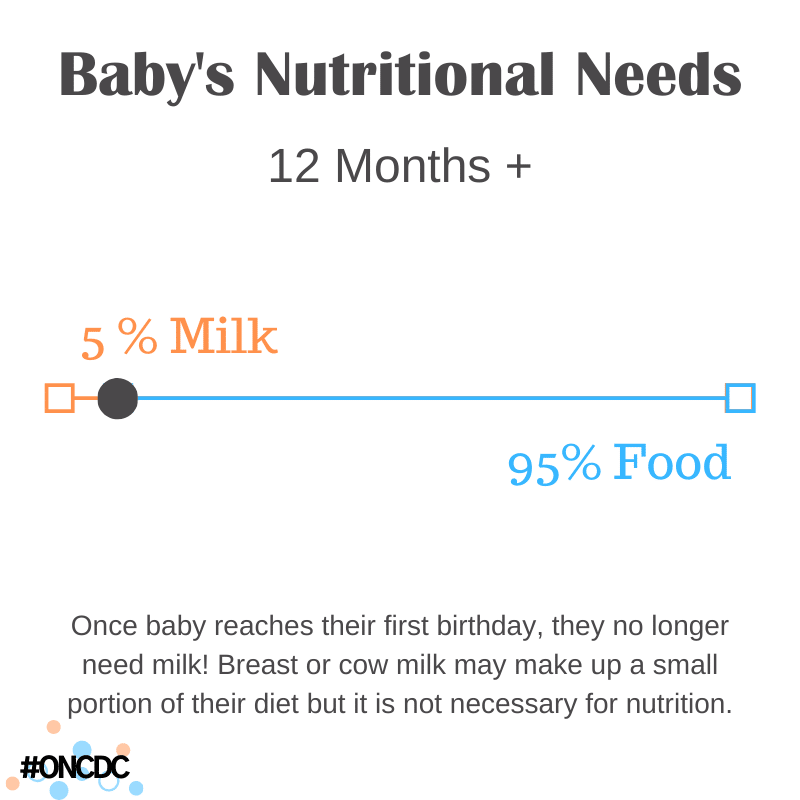Baby’s Nutritional Needs – 12 Months +

We welcome, support, and recommend chest feeding as long as it suits the mother and child. The World Health Organization (WHO) states from age 12-24 months up to 30% of children’s calories can come from human milk, however that is not a reality for most children in the United States. If you’re feeding and enjoying it, keep it up as long as it works for you and baby! In our experience, after age one, families are chest feeding less and 90% or more of baby’s calories are coming from food.
Additionally, many babies are no longer chest feeding after age one. If you’re ready to stop chest feeding there is no need at this point to introduce formula. After their first birthday, babies can drink cows milk, of which they should be drinking no more than 24 ounces. This is a maximum recommendation; toddlers (children over age one) do not need any milk.
If your baby was drinking formula it is time to start weaning off formula. You can mix formula with cow’s milk, increasing the proportion of cow’s milk over time until the milk is fully cow’s milk. If your toddler doesn’t like milk that’s okay. You can meet their needs for fat, protein, calcium, and Vitamin D with other foods and supplements.
The two biggest mistakes we see after the first year are continuing formula and stressing about consumption.
Whether your child takes to cows milk or not, it is time to move away from formula. Stick with your routines. You can set age appropriate rules around meal time. You choose what toddlers eat, when they eat, and where they eat, they choose how much they eat! Your stress doesn’t help so keep offering regular routine food and milk and your baby will show you what they need.
You might also be surprised, but one year-olds growth is slowing and they may be eating less. They are still growing, but they are no longer doubling their size so rapidly. If you are offering regular healthy food you baby will have what they need.
Still chest feeding?! Yay! Human milk is a healthy food supplement for as long as you’d like!
Disclaimer: This is not medical advice. This framework is based on our experience and research. We promote practicing cued care and do not advocate for any specific feeding regime or counting children’s calories. The age ranges and the idea of percentages are to help families see there is normal variability across children and families. Look at the graphic as a framework knowing that each child and family is different.
Read More:
“WHO | Complementary feeding – World Health Organization.” https://www.who.int/nutrition/topics/complementary_feeding/en/. Accessed 20 Dec. 2019.
“Weaning from the breast – NCBI.” https://www.ncbi.nlm.nih.gov/pmc/articles/PMC2720507/. Accessed 20 Dec. 2019.
https://www.eatright.org/food/nutrition/dietary-guidelines-and-myplate/dairy-alternatives-for-kids-who-wont-or-cant-drink-milk
https://www.ucsfbenioffchildrens.org/education/your_baby_at_12_months/
